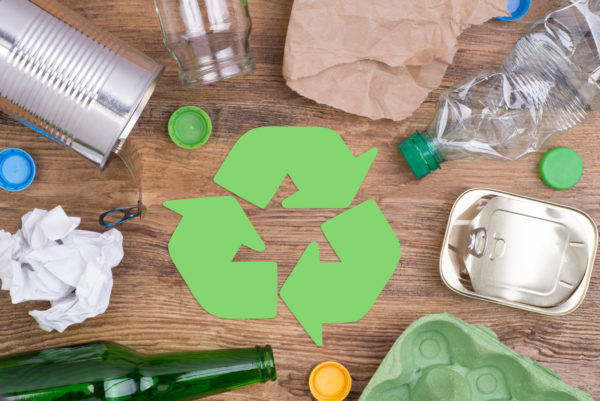
There’s a lot of information out there about recycling, but not all that information is correct. These are just some of the rumors flying around about recycling that aren’t actually true.
Myth #1
Caps and lids need to be removed.
While there was a time when lids and caps needed to be removed, the general rule of thumb now is to only remove them if they’re a different material than the container they’re topping. This makes it easier to sort recycling. For example, leave the plastic lid on the plastic water bottle, but remove the metal lid from the glass jar.
Myth #2
The best way to determine if something is recyclable is to look at the number in the recycling symbol on the item.
The number in the center of the arrows on certain materials is called the resin identification code. While this symbol was adopted by the recycling industry at one point, it only indicates what type of plastic is in an item. It doesn’t necessarily indicate that the material is recyclable with your recycling collector or even at all. The best way to determine if a material is recyclable is to follow the guidelines for your collector. More on this
Myth #3
Recycling is the best way to reduce waste.
While recycling is good for the environment, the best way to reduce waste is by reducing waste. Recycling is what happens after you’ve generated the waste. It shouldn’t be a reason to use as much of something as you want because you’ll recycle it later. If you really want to do what’s best for the environment, find ways to reduce how much you consume, such as opting for a reusable water bottle instead of disposable plastic bottles or reading the newspaper online instead of as a hard copy.
Myth #4
Materials can only be recycled once.
Some materials, such as plastic, have a short recycling life. They’re usually recycled into a new product which can’t be recycled again. For example, plastic bottles are recycled into sleeping bags. However, metals and glass can both be recycled over and over again.
Myth #5
Recycling uses more energy than it saves.
In most cases, it uses about half as much energy to recycle something into a new product than to make a new product from scratch. And that’s only one of the benefits. There are also the raw materials (trees, etc.) that are conserved by creating a new product from recyclables.
Myth #6
A little recycling contamination is fine.
While a few contaminated materials may not mean an entire load of material can’t be recycled, it’s very important to keep items that aren’t accepted out of recycling as much as possible. If one recycler decides to throw an item in the stream that doesn’t belong, it’s not the end of the world. But if a couple hundred people don’t follow the guidelines, there may be more trash than recycling in the load.
Myth #7
Recycling pays for itself.
In an ideal world, this would be true, but the reality can be quite a bit different. Recyclable materials are a commodity, and just like any other commodity, the price fluctuates. Sometimes prices are ok, but sometimes they’re not. And when you figure in the overhead it takes to pick recycling up, sort it, bale it and ship it to an end user, it’s no cash cow. Luckily, the environmental and service benefits of recycling mean it’s still a valuable pursuit. More on this
